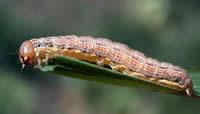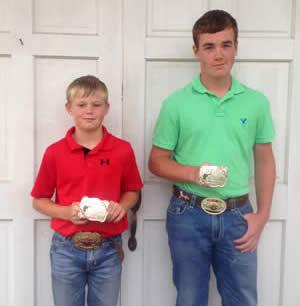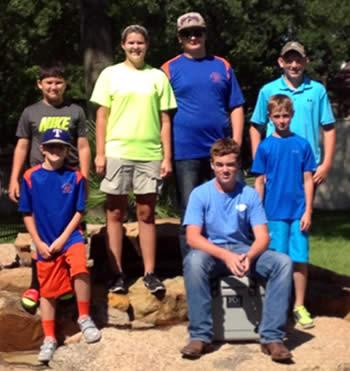County Extension Agent
July 17, 2015 - If you love the idea of growing citrus in your landscape, you can now add a little more Asian influence in your corner of the world with the new Satsuma Arctic Frost. According to state Extension specialists, this represents a breakthrough in home citrus production. It's the first citrus ever recommended virtually statewide.
Satsuma Arctic Frost has been named a Texas Superstar plant by Texas A&M AgriLife Research and Texas A&M AgriLife Extension Service horticulturists. Arctic Frost is the most cold-hardy satsuma hybrid tested so far, having survived temperatures as low as 9 degrees at the A&M Research and Extension Center test site near Overton.
First introduced into the US from Japan in 1878, satsumas produce fragrant white blossoms in March and April. These trees are also green the year round. The fruit turns bright orange as it ripens in late October.
Arctic Frost grows to become a relatively tall tree with white flowers that give off a heady orange fragrance.
Come late fall or early winter, Arctic frost produces fruit that is juicy, nearly seedless and easy to peel. It will grow 8 to 12 feet tall in the ground or 6 feet tall as a patio container plant in about five to six year. When planting in the ground, protection from cold by wrapping with frost cloth for the first year or two is recommended. A site protected from the north wind will also help with winter survival.
It should be noted that, as opposed to other satsumas which are grafted to another variety rootstock, Arctic Frost is grown from its own rootstock.
That is meaningful because if they get froze back from a hard winter, they do not produce shoots from below the graft.
If you decide to add this to your landscape, remember that citrus thrives in full sun. This plant needs eight to ten hours each day, even during the summer months. It tolerates some shade, but less sun means less fruit
Satsumas are easy to grow if they aren't watered too often. Water only when the mix is dry an inch below the surface. During a hot, dry summer, you may need to water every three or four days. In a wet winter, the plant may go weeks between watering.
Be careful, for every satsuma that dies from drought, you'll kill 200 from overwatering.
For maximum sweetness at harvest, leave fruit on the tree for about one week after it has completely assumed its orange color.
The fruit from a young tree averages 1.8 inches in diameter, approximately three-quarters the size of a tennis ball. With its smooth, thin, lightly attached skin, satsumas have become known as the "kid-glove or zipper-skin citrus" due to the ease with which the skin can be removed and internal segments separated.
The more adapted varieties of this Japanese transplant have an interesting history. All the early satsuma crosses are the work of Dr. Ying Doon Moy, who was born in a small village in south China but immigrated to the U.S. in 1978.
Moy found a position as a plant breeder with the San Antonio Botanical Garden in 1980, where until he retired in 1999, he collaborated on the development of more than 150 new varieties of papaya, ginger, esperanza, rose, hibiscus and citrus.
In 1997, Moy and an AgriLife Extension horticulture specialist began collaborating to hybridize various satsuma mandarins with winter hardy Changsha tangerines, a citrus variety long cultivated in China. Changsha is one of the most cold-hardy citruses grown there. It produces edible but extremely seedy fruit.
The goal was to produce a satsuma hybrid with enhanced cold hardiness, as well as a high-quality fruit with a low seed count, and they succeeded.
From the most successful cold-hardy crosses, Orange Frost and Arctic Frost were selected and propagated.
Texas Superstar is a registered trademark owned by AgriLife Research, a state agency that is part of the Texas A&M University System. More information about the Texas Superstar program, including retail outlets where Superstar varieties may be purchased, can be found at http://texassuperstar.com/.
Educational programs of the Texas AgriLife Extension Service are open to all people without regard to race, color, sex, disability, religion, age, or national origin.
Lane Dunn is the County Extension Agent for agriculture and natural resources for Shelby County. His email address is jldunn@ag.tamu.edu.
July 10, 2015 - For the record, I haven’t spoken with anyone who has armyworms this season, yet.
 Earlier weather patterns would appear to me to set up conditions ripe for their appearance. And with such a potential economic pest out there, it bodes well to be prepared.
Earlier weather patterns would appear to me to set up conditions ripe for their appearance. And with such a potential economic pest out there, it bodes well to be prepared.
There are two species of armyworms that attack forage and field crops. The fall armyworm is most abundant during late summer through early November in Texas and feeds primarily on Bermuda grass and small grains, although it can attack many other crops such as Bahia.
The true armyworm is common during April and May when it attacks wheat, rye grass, winter pastures, and other grasses. Both caterpillars can occur in very large numbers, can consume a crop almost overnight, and will move in large masses or “armies” to adjacent fields in search of food. Armyworms attack many different kinds of plants and when food is scarce, they can feed on plants not normally attacked.
From research and field observation, the fall armyworm does not apparently overwinter here. Moths fly north from south Texas each year to re-infest this area. Outbreaks can occur in late summer and fall, and follow periods of rain which create favorable conditions for eggs and small larvae to survive. The earliest occurrence one producer told me he saw them was July 4th.
Fall armyworms are green, brown or black. A distinct white line between the eyes forms an inverted Y pattern on the face.
The fall armyworm moth has a wingspan of about 1.5 inches. The front pair of wings is dark gray. Moths are active at night and common around lights at night. A single female can deposit up to 2000 eggs.
Eggs are laid in masses of up to 50 eggs on the grass leaves and are difficult to find. These eggs are covered with the grey scales from the moths body, giving the mass a fuzzy appearance. They hatch in 2-3 days.
Armyworms are very small at first, causing little plant damage, and as a result infestations often go unnoticed early on. Larvae feed for 2-3 weeks and full grown larvae are about 1 to 1 2 inches long. Armyworms consume 80% of their total food intake during the last few days of development.
Once larvae are greater than 3/4 inch, the quantity of leaves they eat increases dramatically. During the final 2-3 days of feeding, armyworms consume 80% of the total foliage consumed during their entire development. For this reason, extensive feeding damage can occur in a few days.
Development from egg to adult requires about 4 weeks during the summer and is longer during cool weather. There are several generations a year. Development ends with cold weather in November.
Given their immense appetite, great numbers, and marching ability, armyworms can damage entire fields or pastures in a few days. Once the armyworm completes feeding, in tunnels into the soil about an inch and enters the pupal stage.
A full grown armyworm tunnels into the soil and transforms to the pupae, an inactive, non-feeding stage. In 7-10 days, the moth emerges from the pupa and starts its cycle anew.
The key to managing fall armyworms is to detect infestations before they have caused economic damage. Often, landowners will notice large numbers of cattle egrets on a hay meadow. Though the birds are easy to spot, this may be too late.
The best way I’ve heard to detect armyworms is to regularly scout pastures early in the morning while there is plenty of dew on the grass. Wear your black rubber boots and walk thru fields, or drive thru them on your ATV with a foot dragging off to the side, looking for small caterpillars on your boot. Affected pasture grass may have a ragged look, different from grazed or mowed grass.
Fall armyworm larvae feed primarily during the night and during cloudy weather. Later during the day, look for armyworms under loose soil and fallen leaves on the ground.
The density of armyworms sufficient to justify insecticide treatment will depend on the stage of crop growth and value of the crop. Seedling plants can tolerate fewer armyworms than established plants. Infestations of 2-3 armyworms per square foot may justify treatment.
Hot, dry weather and natural enemies limit armyworm populations. Insect parasites such as wasps and flies, ground beetles, and other predators help suppress armyworm numbers. However, these natural factors can be overwhelmed when large numbers of migrating moths lay tens of thousands of eggs in a field.
There are a number of insecticides labeled for armyworm control in pastures. Remember that approved insecticides can kill non-target insects. Do not allow drift across fences to areas with blooming plants as beneficial pollinators will certainly be harmed.
Always read and follow all label instructions and restrictions on any pesticide use.
Educational programs of the Texas AgriLife Extension Service are open to all people without regard to race, color, sex, disability, religion, age, or national origin.
Lane Dunn is the County Extension Agent for agriculture and natural resources for Shelby County. His email address is jldunn@ag.tamu.edu.
July 3, 2015 - Still looking for that summer-grown vegetable that can tolerate our heat and humidity as well as be tasty? Take another look at okra.
Okra is a Southern staple in the home garden and at the dinner table and can be grown throughout our area. It is considered a warm season vegetable and is a member of the Mallow family, which includes plants such as cotton and hibiscus. This vegetable is both easy and fun to grow and can be used in many different culinary dishes and for dried flower arrangements.
Okra prefers well-drained, sandy soils that are high in organic matter, but it can be grown in a wide variety of soils. Okra can tolerate a pH range from 5.8 to 6.8. Okra does best when planted in a full sun area. Align the rows in an east/west direction to capture maximum sunlight. Only plant when soils have warmed up to at least 65 degrees F at a 4-inch depth. At this time of the year, we have certainly reached optimum growing conditions.
Okra can be established by sowing seeds directly into the garden. To enhance germination, soak okra seeds in water for several hours or overnight before sowing. Space rows 3-feet apart; sow seeds 1-inch deep and 4- to 6-inches apart within the row. When seedlings are several inches tall, thin the row so the remaining plants are spaced 1.5- to 2-feet apart.
Without a soil test, a general fertilizer recommendation is to apply 2 pounds of 10-10-10 per 100 square feet and make two side-dressings of 3 ounces of 10-10-10 per 100 feet of row, beginning when plants are 6- to 8-inches tall and again two to three weeks later. Additional side-dressing may be needed if heavy rains occur. Do not over-use nitrogen, since it can cause excessive vegetative growth with poor yield.
Okra will do fairly well under dry conditions. However, if you water the plants every 7 to 10 days, the yield will be higher. Sandy soils will need water more often than clay soils.
Okra plants will produce large flowers about 2 months after planting. The okra pods will be ready to pick 3 to 4 days later.
From seed to harvest is about 60 to 70 days, when pods are 2- to 3-inches long. At this stage the pods are still tender. Larger okra pods will become too tough and fibrous. Round-podded okra varieties remain tender at larger pod sizes and are good to use for slicing and freezing.
Okra grows very fast; therefore, it must be harvested every few days. Do not allow pods to mature on the plant because this will slow production and cause tough, fibrous pods.
The optimum conditions for storing okra are a moist environment and temperatures of 45 to 50 degrees F. Okra can be stored in the refrigerator for about five days.
Some varieties to consider are Burgundy, Cajun Delight, Clemson Spineless, Annie Oakley, Emerald, Green Best, Lee, Louisiana Green, and, an heirloom variety, Stewart’s Zeebest.
Okra seed is easily saved for next season by leaving some of the last pods on the plant until they get very large. Remove them and allow them to dry. The seeds will shell easily from the pods.
Lane Dunn is the County Extension Agent for agriculture and natural resources for Shelby County. His email address is jldunn@ag.tamu.edu.
Educational programs of the Texas AgriLife Extension Service are open to all people without regard to race, color, sex, disability, religion, age, or national origin
July 2, 2015 - At one time, peaches were the leading fruit crop grown in Texas. I don’t know if they still are. Years ago, experts estimated there were 1 million trees planted statewide, with just less than half of them found in home landscapes across the state.
Peaches will take some care. There’s pruning; weed, insect, and disease control; fruit thinning; as well as water and fertilization.
Yet you only have to plant one, unlike many other fruits, because they are self-pollinating. And a lone tree is less likely to have problems with pests than an entire orchard.
In our area, the most limiting factor in peach production is late spring frost, and gardeners should plan on losing an occasional crop even in the best of locations.
Peaches are very susceptible to waterlogged soils. Excellent internal soil drainage is essential to long-term tree productivity and survival. The roots cannot grow without air in the soil profile.
This factor alone has resulted in more than a few calls to our office this year regarding dead peach trees.
Internal drainage is the key. We often look at the slope of the land and think of how well water can run off the top. That’s “surface” drainage.
“Internal” drainage is the ability for water to percolate thru the soil profile once it gets waterlogged.
The ideal is a sandy-loam topsoil that is at least 18 to 24 inches deep and is underlain with a well-drained red clay subsoil. Subsoils that are blue, gray, mottled, or dull colored because it usually drains poorly.
The trees will perform better and live longer if you plant them on terraces for maximum soil drainage. While this practice is essential on shallow, poorly drained soils, the use of terraces improves tree performance even on the best of soils. If you can, construct the terrace, or bed, to make the top 12 to 18 inches higher than the surrounding soil.
The ideal soil pH for peach production is between 6 and 7. If the pH is below 6.0, you may need to apply lime before establishing the trees.
If you are thinking of planting a peach or other fruit trees, do not replant at the site of an old tree for at least 3 years after it has been cleared. Peach trees perform best on sites where no stone fruits or forests have grown for several years. Also do not plant a site that was recently cleared of standing timber—especially post oaks— because the risk is higher for diseases such as oak root rot.
Varieties recommended for a given location typically have chilling requirements within 100 hours of the average accumulation for that site. Chilling hours is a horticulture term for the number of hours with a temperature below 45 degrees.
In Shelby County we have an average of 600 chilling hours, so you will want to select a variety that does well in the 450 to 750 chilling hour range. There are several varieties to consider. Be sure to determine if you want a free stone variety or one where the flesh clings to the seed. There are many varieties that are classified as “semi-cling”. I could try and list them all here, but I would run out of space and I with new varieties coming on the market, one would invariably be left off.
You have plenty of time to study and prepare your future peach tree site as December thru February is the ideal time to plant them.
Lane Dunn is the County Extension Agent for agriculture and natural resources for Shelby County. His email address is jldunn@ag.tamu.edu.
Educational programs of the Texas AgriLife Extension Service are open to all people without regard to race, color, sex, disability, religion, age, or national origin.
July 1, 2015 - The 1st annual Walker County Whiz-bang was held in Madisonville at the Madisonville County 4h range. This shoot is a two day shoot with juniors and intermediates shooting on Saturday, June 27th and seniors shooting on Sunday.
Shelby County 4h shooters had four kids participating; Seth Shamblin, Lance Holloway, Logan Holloway and Konner Windham.
Junior Division:
Seth Shamblin 2nd place skeet, 3rd place whiz-bang
Intermediates:
Lance Holloway 2nd place trap, 6th place skeet
Logan Holloway 2nd place trap, 4th place whiz-bang
Senior I Ladies:
Konner Windham 2nd place skeet, 2nd place whiz-bang
We would like to say Congratulations on a job well done representing Shelby County
June 26, 2015 -  The 20th annual Houston County Whiz-bang was held in Crockett on June 19th and 20th. The junior and intermediates shot on Friday and included; Hagan Craig, Tucker Scarber, Cole McDaniel, Seth Shamblin, Aiden Arwine, Corey Denney, Colton Gutermuth, Logan Holloway and Lance Holloway. On Saturday, Konner Windham, Wade Baty and Nic Lambert competed in the senior division.
The 20th annual Houston County Whiz-bang was held in Crockett on June 19th and 20th. The junior and intermediates shot on Friday and included; Hagan Craig, Tucker Scarber, Cole McDaniel, Seth Shamblin, Aiden Arwine, Corey Denney, Colton Gutermuth, Logan Holloway and Lance Holloway. On Saturday, Konner Windham, Wade Baty and Nic Lambert competed in the senior division.
Junior Division
Seth Shamblin-1st whiz-bang, 2nd trap, 3rd skeet and Junior HOA Champion
Intermediate Division
Logan Holloway-1st skeet, 2nd whiz-bang, 3rd trap and Intermediate HOA Champion
We would like to say Congratulations on a job well done representing Shelby County.
June 22, 2015 - If you are frustrated with your spring garden and have missed the produce that you’ve come to love and appreciate, we may need to drop back, punt, and plan for a fall garden. It is a commonly overlooked fact by gardeners that there are indeed two times to have a vegetable garden each year: spring and fall.
Yes, the fall vegetable garden is just as much a possibility as a spring one, just different. It will be different in a number of ways.
Establishing a fall garden is different as you have to work in the heat up-front. This will be to your advantage as warm soils help germinate vegetable plants much sooner than cooler spring soil temperatures.
Watering is also approached with a different mind-set. Water will be crucial to establishing the summer growing vegetables. Germinated seeds in July and August will need uniform moisture and plenty of it. Mulching, a practice not often done for spring gardens will really help here. Just a light layer of mulch will greatly aid in keeping moisture in the soil next to the developing roots.
Pest control for fall gardens will be less. Insect problems that are commonly experienced in the spring will be reduced. Disease issues that arise from cool, moist environments when plants are young will also be diminished.
The biggest proponents of fall vegetable gardens will always brag on the harvest. Harvested produce in autumn, in milder weather, are reported to taste better. The time spent harvesting, choosing which tomato or what size cucumber to pick, is obviously more comfortably done in the cooler fall months as well.
Of great importance is your planning. Most vegetables traditionally grown in the spring/summer have a hard deadline when fall gardening. They must beat the frost. Now the average first frost for this area is mid- November. The key word is average. Sometimes it may be near Christmas, and other times it will be prior to Halloween.
So when choosing what and when to plant, keep in mind how long it takes each vegetable to reach harvest stage. Southern peas (purple hulls, zipper creams, etc.) normally take about 60 days. Counting backwards from a mid-October harvest puts the planting at mid-August at the latest. To get pumpkins for Halloween you need plant 90 to 100 days before you want it on display. 90 days before mid-October is mid-July.
Late fall plantings of most greens will handle frosts just fine, perhaps even benefit. Collards grow best in cool weather and can stand temperatures of 20 degrees or less in some cases. They taste sweeter after a light frost.
June 18, 2015 - It’s becoming more and more obvious that the deluge of rains we received just weeks ago and now this drenching from tropical storm Bill has negatively affected local gardens and orchards. The excessive moisture has caused a number of problems.
The most common “too much water” related problem I’ve heard of in the vegetable gardens is fruit simply rotting away. The water-logged soils have caused a number of vegetable diseases to run rampant. While there are a few products on the market to control fungus in the vegetable garden, extremely infected plants should be pulled up and discarded so that it won’t infect other plants.
In some extreme gardening examples, the prized topsoil has simply been washed away and deposited on the nearby lawn, ditch, or roadway.
Fruit trees have shown effects in two ways: reduced fruiting and death. If a fruit tree experiences a significant rainfall event over the course of its blooming, many of those blooms simply do not get pollinated. I once spoke to a commercial peach grower from Tyler that was lamenting the loss of his entire peach crop.
He and I had the conversation in early April about his projected loss, long before any fruit would be ready for harvest. He explained that the peak week of blooms on his varieties of peaches never has a sunny day for the pollinators to do their best work. Indeed later that year, his otherwise healthy looking peach orchard had very few fruit to harvest.
Others from around Shelby County have been calling me over the past couple of weeks complaining about how their fruit trees (peaches, plums and a pear tree specifically) have simply died.
Now we all know that most every fruit tree needs well drained soil. But if you have the kind of weather that we’ve had, you take away the opportunity for those tree’s roots to breath! Indeed, roots need air to survive. The only exception that I can think of is Mayhaws, which as we all know, do exceedingly well in the sloughs and soggy, bottomland soils.
If your peach tree up and died this spring, I’m betting it suffered from a water-logged soil. While much of the topsoil is good to very good around the county, we do have clay subsoil.
While that has been described by some as a good trait (holding water nearer the root zone), there can clearly be too much water held above it.
June 16, 2015 - The Freestone County Whiz-bang was held at the beautiful Caney Creek Lodge on Saturday, June 13th. Shelby County 4H shooters had eight kids participating; Seth Shamblin, Tucker Scarber, Hagan Craig, Konner  Windham, Nic Lambert, Colton Gutermuth, Lance Holloway and Logan Holloway.
Windham, Nic Lambert, Colton Gutermuth, Lance Holloway and Logan Holloway.
This shoot had two events which included a one hundred bird sporting clays course and a fifty bird whiz-bang. The places were decided by the total of both events.
Junior Division
Seth Shamblin - 5th place
Intermediate Division
Logan Holloway - 4th place
Congratulations to Nic Lambert and Konner Windham for winning Briley gift cards in the drawing.
We would like to say Congratulations on a job well done representing Shelby County.
June 15, 2015 - The 2015 Texas 4-H Roundup contest was held in College Station, Texas on the campus of Texas A&M University from June 8-11, 2015. Texas 4-H Roundup is a qualifying and invitational event for youth between the ages of 11 and 18 that have successfully placed in a qualifying event at the district level or signed up to compete in an invitational event at the state level. Texas 4-H Roundup includes approximately 50 different contests and workshops that test 4-H members on life skills in such attributes are decision making, public speaking, organization, and working with others.
Shelby County had two participants in the senior division Photography contest that placed as follows:
Blue ribbon placing in Theme category – Victoria Baker
Blue ribbon placing in Plant/Flora category – Victoria Baker
Blue ribbon placing in Animals: Domestic category – Victoria Baker
Blue ribbon placing in Animals: Wildlife category – Konner Windham
Blue ribbon placing in Dominant Color category – Konner Windham
Red ribbon placing in Nature and Landscape category – Konner Windham
Congratulations to these outstanding 4-H youth photographers!
If you would like information on this program or participating in other Shelby County 4-H projects, please contact county extension agents Jheri-Lynn McSwain, M.Ed., M.S., Family and Consumer Sciences at jlmcswain@ag.tamu.edu or Lane Dunn, M.S., Agriculture and Natural Resources at jldunn@ag.tamu.edu or by phone at 936-598-7744.









